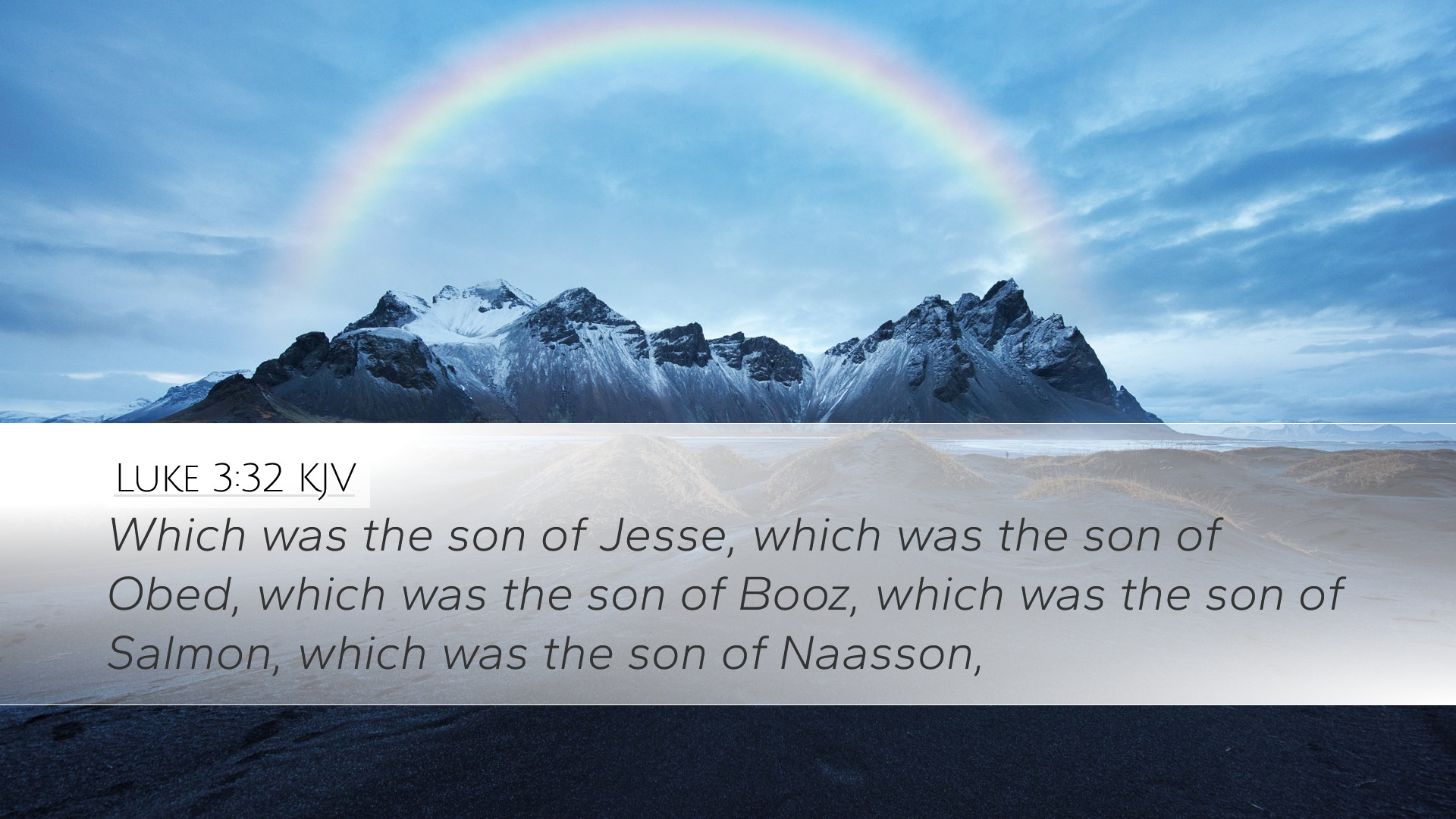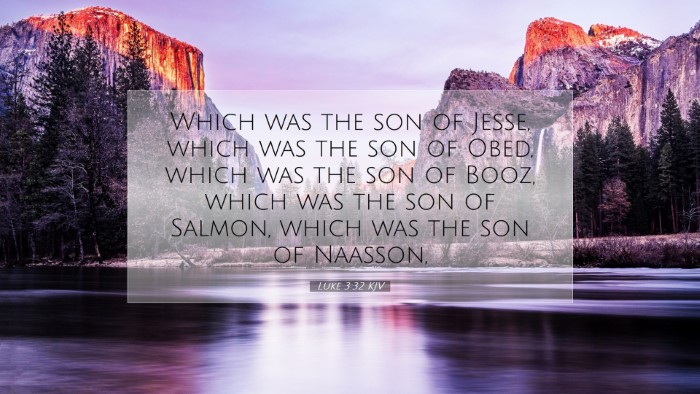Commentary on Luke 3:32
Luke 3:32 states: "The son of Jesse, the son of David, the son of Abraham." This verse is integral to understanding the Messianic lineage and the fulfillment of Old Testament prophecy concerning Jesus Christ. It emphasizes His rightful place in the genealogy of the chosen people and the covenant established with David and Abraham.
Genealogical Significance
The lineage recorded in this verse serves multiple purposes:
- Historical Validity: It reinforces Jesus's legal claim to the throne of David, a crucial aspect of Jewish expectation for the Messiah.
- Theological Implications: This lineage indicates God's faithful adherence to His covenant promises to Israel.
- Moral Example: The characters in this lineage offer various lessons in faith, obedience, and the complex tapestry of God's redemptive work through flawed human lives.
Understanding the Context
The context of Luke 3 is pivotal. John the Baptist is preparing the way for Jesus by calling people to repentance. By tracing Jesus's genealogy back to David and Abraham, Luke establishes Jesus as the culmination of Jewish expectations of a Redeemer.
Matthew Henry's Perspective
Matthew Henry emphasizes the importance of tracing Jesus's lineage. He notes that mentioning David highlights:
- The Kingship of Jesus: As a descendant of David, Jesus embodies the fulfillment of the Davidic covenant, where God promised that David's throne would endure forever.
- God's Faithfulness: The genealogy illustrates God's faithfulness across generations, depicting how God worked through human history to bring forth the Messiah.
Insights from Albert Barnes
Albert Barnes provides depth by exploring the symbolic and literal implications of the lineage:
- Symbol of Restoration: The mention of Jesse and David symbolizes the restoration of Israel; Jesus is the one who will bring peace and redemption.
- Universal Registry: Barnes points out that this genealogy is not just a Jewish concern; it aligns with God's plan for redemption that extends to all nations, ultimately fulfilled in Christ.
Adam Clarke's Interpretation
Adam Clarke remarks on the significance of each ancestor mentioned in this genealogy:
- Life Lessons: Each of these figures exhibits complex traits that highlight both strengths and weaknesses. Clarke suggests that this reality showcases God's ability to work through fallible humans.
- The Covenant Connection: The reference to Abraham indicates that Jesus is the fulfillment of the promise made to Abraham, cementing His role as the Savior who would bless all nations.
Applications for Pastors and Theologians
As pastors, students, and scholars engage with Luke 3:32, several key applications arise:
- Faithfulness of God: This verse provides assurance of God’s unwavering fidelity to His promises, a vital theme for pastoral care and preaching.
- Redemptive History: Understanding the genealogical lineage enriches one’s understanding of biblical history, helping to place the New Testament within the broader narrative of God's covenant with humanity.
- The Nature of Jesus: This verse underscores the dual nature of Christ — fully God and fully man, which should influence Christological discussions and teachings.
Conclusion
In conclusion, Luke 3:32 is more than a simple genealogy; it is a rich tapestry that demonstrates God's plan for salvation through Jesus Christ. The insights from Matthew Henry, Albert Barnes, and Adam Clarke enrich our understanding and elevate our appreciation for the complexities of divine mercy and covenant faithfulness. As we delve deeper into such passages, may we be inspired to communicate the profound truths contained therein to our communities and the world.


